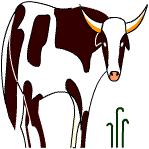Gouda Cheese
Created | Updated Feb 14, 2002

Gouda Cheese
Gouda cheese is named after the town of Gouda in The Netherlands
which is just outside Rotterdam.
The cheese was originally made in Gouda around the sixth century and
has been exported since the thirteenth century.
Although Gouda is now made all over the world not just in Holland, it is still the most popular
cheese in Holland with 60% of all cheese production being Gouda.
The cheese is made from cows milk and has a sweet fruity flavour.
Normal Gouda is coated in a yellow rind, whilst mature Gouda, which has been matured for at least 18 months,
has a black rind. Other types of Gouda are available such as spiced Gouda, Gouda with garlic and Gouda with nettle.
How to make traditional Gouda
The milk is placed into a large vat or churn and rennet or curdle is added to the milk. Some producers will also add
a bacterial culture at this stage to give the cheese added flavour.
Next the milk is either heated or stirred constantly to seperate the curds (the solid bits) from the whey (the milky bits).
The curd is retained and are put into special cheese moulds. The moulds are pressed in a cheese press to force the liquid out
and to make the cheese into a cheese shape
The cheese are now put into salt water. The purpose of this is to add flavour and preserve the cheese by encouraging a natural rind to form.
The cheeses are now left to dry for about two days before the traditional wax coating is put on them. This stops the cheese from drying out.
The cheese then ripens for about 3 weeks before it is ready to be sold
